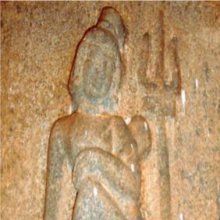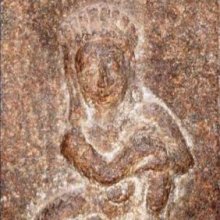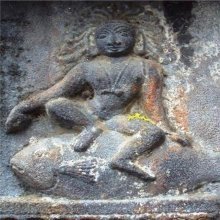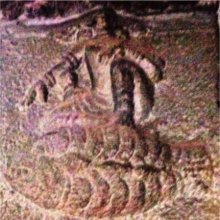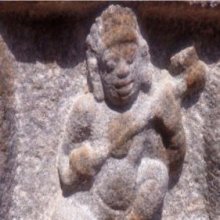Minanatha, Mīnanātha, Mina-natha: 8 definitions
Introduction:
Minanatha means something in Hinduism, Sanskrit. If you want to know the exact meaning, history, etymology or English translation of this term then check out the descriptions on this page. Add your comment or reference to a book if you want to contribute to this summary article.
Images (photo gallery)
(+25 more images available)
In Hinduism
Shaivism (Shaiva philosophy)
Source: Wisdom Library: ŚaivismMīnanātha (मीननाथ) is an incarnation of Siddhanātha in the second yuga, belonging to the Pūrvāmnāya (‘eastern doctrine’) tradition of Kula Śaivism, according to the Ciñcinīmatasārasamuccaya. He is also known as Piṅgalanātha. The consort of Mīnanātha was Kuṃkumā (or, Kuṅkumā) and from her were born twelve princes. Siddhanātha incarnates as a Kaula master in each of the four yugas.
The twelve princes born from Kuṃkumā are:
- Bhadra,
- Amarapāda,
- Mahendra,
- Khagendra,
- Mahīdhara
- Guṇḍikanātha,
- Amara,
- Varadeva,
- Citranātha,
- Olinātha,
- Vṛddhanātha,
- Guḍikanātha.
The first six of these princes had no authority to teach, while the latter six did teach and were the founders of six traditions (ovallī).
Source: Google Books: Manthanabhairavatantram (shaivism)Mīnanātha (मीननाथ) is another name for Matsyendranātha, one of the “four Lords (teachers) of the Ages” (Yuganātha).—Matsyendranātha is worshipped as the teacher of this Age along with three other teachers and their consorts who brought the Kaula Tantra into the world in the previous three Ages. These four Lords of the Ages (yuganātha) are highly revered in the Kālīkrama and came to be considered to be embodiments of the basic states of consciousness. Matsyendranātha has a variety of cognate names [e.g., Mīnanātha] (Cf. Dyczkowski 1988: 163 n23 and Bagchi 1934: 9).

Shaiva (शैव, śaiva) or Shaivism (śaivism) represents a tradition of Hinduism worshiping Shiva as the supreme being. Closely related to Shaktism, Shaiva literature includes a range of scriptures, including Tantras, while the root of this tradition may be traced back to the ancient Vedas.
Shilpashastra (iconography)
Source: DSpace at Pondicherry: Siddha Cult in Tamilnadu (sculpture)Mīnanātha (मीननाथ) or Matsyendranāhta refers to the third representation of the nine navanātha reliefs in the Ulsūr Someśvara temple.—Mīnanātha is depicted seated on fish as his right hand is resting on his right knee. His left hand is resting on the fish. He is wearing bangle like rings in his both arms and wrists, a thick necklace like ornament, a yoga-daṇḍa is placed behind his right hand, a round wallet is tied on slightly below his left shoulder; he is having the matted hair and wearing big kuṇḍalas on his ears. His head is slightly tilted upwards as he is facing his right side. The fish is also clearly depicted in an artistic manner.
In the Ulsūr Someśvara temple, on the south wall of the ardhamaṇḍapa, there found depictions of the navanāthas (eg. Mīnanātha) in a variety of poses with huge coffiures, holding attributes such as kamaṇḍala, daṇḍa (staff) and so on. From east to west the nine sculptures of the Nāthas appear in the following order: seated respectively on a Tortoise, Vyāli, Lion, Fish, Scorpion, Snake, Antelope, Boar and Tiger.
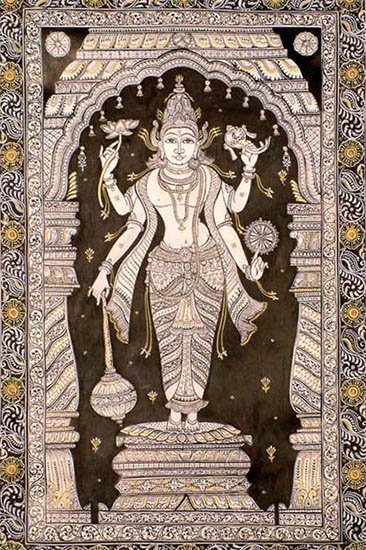
Shilpashastra (शिल्पशास्त्र, śilpaśāstra) represents the ancient Indian science (shastra) of creative arts (shilpa) such as sculpture, iconography and painting. Closely related to Vastushastra (architecture), they often share the same literature.
Shaktism (Shakta philosophy)
Source: Google Books: ManthanabhairavatantramMīnanātha (मीननाथ) is the name of an ancient teacher, according to the Manthānabhairavatantra, a vast sprawling work that belongs to a corpus of Tantric texts concerned with the worship of the goddess Kubjikā.—Accordingly, “(Now) I will tell (you) about the arising (of the tradition) that gives bliss and accomplishment in the Kṛta Age. (The teacher here) with senses subdued is called Mīnanātha. He is the one who has descended into that House. He is the Lord accompanied by (the goddess) Kulālī. They are four in accord with the diversity of (their) practice. They exert authority and possess the various lineages. The Lord possesses the Six Lineages. [...]”.

Shakta (शाक्त, śākta) or Shaktism (śāktism) represents a tradition of Hinduism where the Goddess (Devi) is revered and worshipped. Shakta literature includes a range of scriptures, including various Agamas and Tantras, although its roots may be traced back to the Vedas.
Languages of India and abroad
Sanskrit dictionary
Source: Cologne Digital Sanskrit Dictionaries: Aufrecht Catalogus Catalogorum1) Mīnanātha (मीननाथ) as mentioned in Aufrecht’s Catalogus Catalogorum:—guru of Gorakṣanātha, a teacher of yoga. Oxf. 101^b. 236^a. Hall. p. 15.
2) Mīnanātha (मीननाथ):—(?): Smaradīpikā.
3) Mīnanātha (मीननाथ):—
—[commentary] on Bhartṛhari’s Vairāgyaśataka.
Mīnanātha (मीननाथ):—[=mīna-nātha] [from mīna] m. Name of a teacher of Yoga, [Catalogue(s)]
[Sanskrit to German]
Sanskrit, also spelled संस्कृतम् (saṃskṛtam), is an ancient language of India commonly seen as the grandmother of the Indo-European language family (even English!). Closely allied with Prakrit and Pali, Sanskrit is more exhaustive in both grammar and terms and has the most extensive collection of literature in the world, greatly surpassing its sister-languages Greek and Latin.
See also (Relevant definitions)
Starts with: Minanatha munishvara.
Full-text (+59): Mina, Kunkuma, Gorakkar, Minanatha munishvara, Akulaviratantra, Jnanamrita, Gorakshanatha, Smaradipika, Gundikanatha, Mahidhara, Samarasya, Pratyavritti, Nijatman, Amarapada, Khagendra, Vritti, Parakasha, Vigraha, Nistaranga, Kaulasimhamuni.
Relevant text
Search found 5 books and stories containing Minanatha, Mīna-nātha, Mina-natha, Mīṉa-nātha, Mīnanātha, Mīṉanātha; (plurals include: Minanathas, nāthas, nathas, Mīnanāthas, Mīṉanāthas). You can also click to the full overview containing English textual excerpts. Below are direct links for the most relevant articles:
Kamashastra Discourse (Life in Ancient India) (by Nidheesh Kannan B.)
2. Works on Kāmaśāstra (f): Smaradīpikā < [Chapter 2 - An Appraisal of Kāmaśāstra Works in Sanskrit]
8.3. The Body in Kāmaśāstra < [Chapter 5 - Looking for Alternatives: Possibilities in Kāmaśāstra]
Varahi Tantra (English Study) (by Roberta Pamio)
Chapter 18 - The Āmnāyas (traditions), Continued < [Summary of the Vārāhī Tantra]
Lord Hayagriva in Sanskrit Literature (by Anindita Adhikari)
Origin of Tantra < [Chapter 6]
The Skanda Purana (by G. V. Tagare)
Chapter 17 - Vṛtra Killed: Bali Prepares for War < [Section 1 - Kedāra-khaṇḍa]
